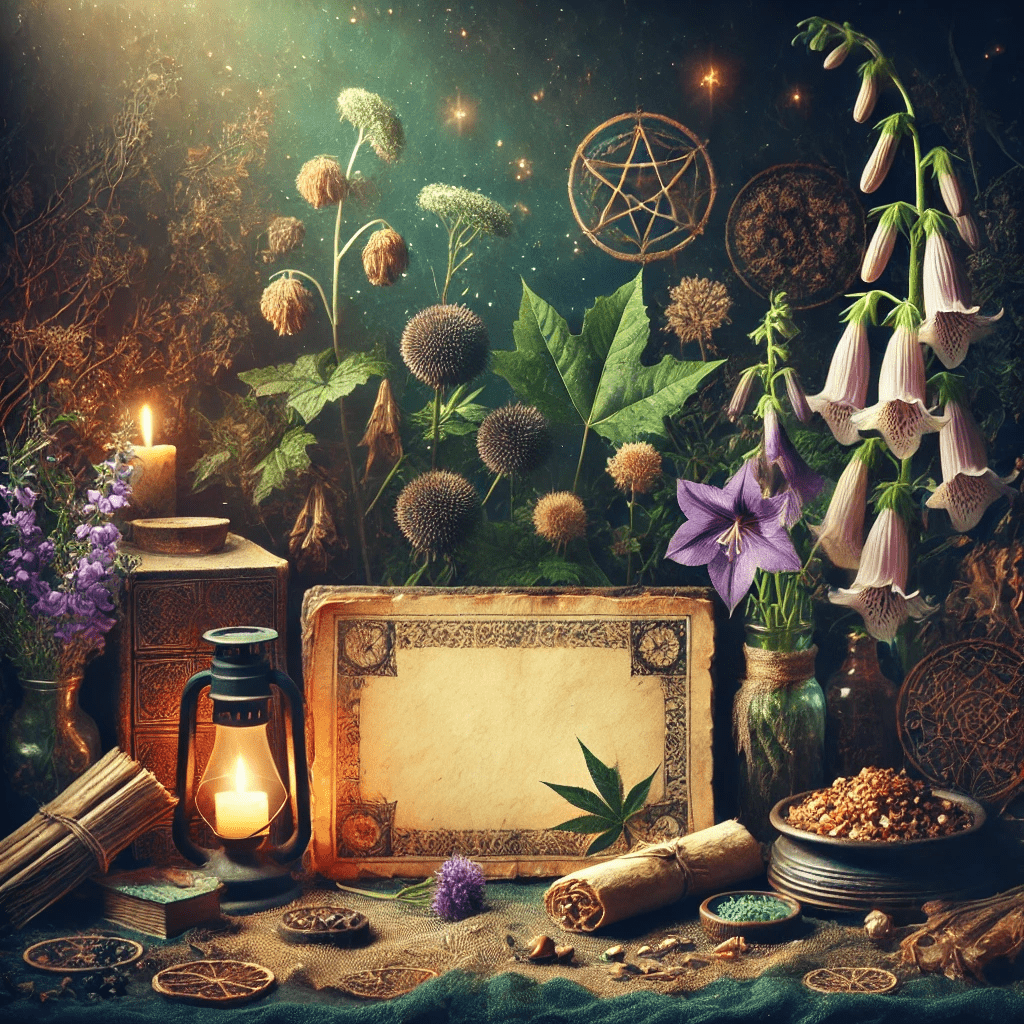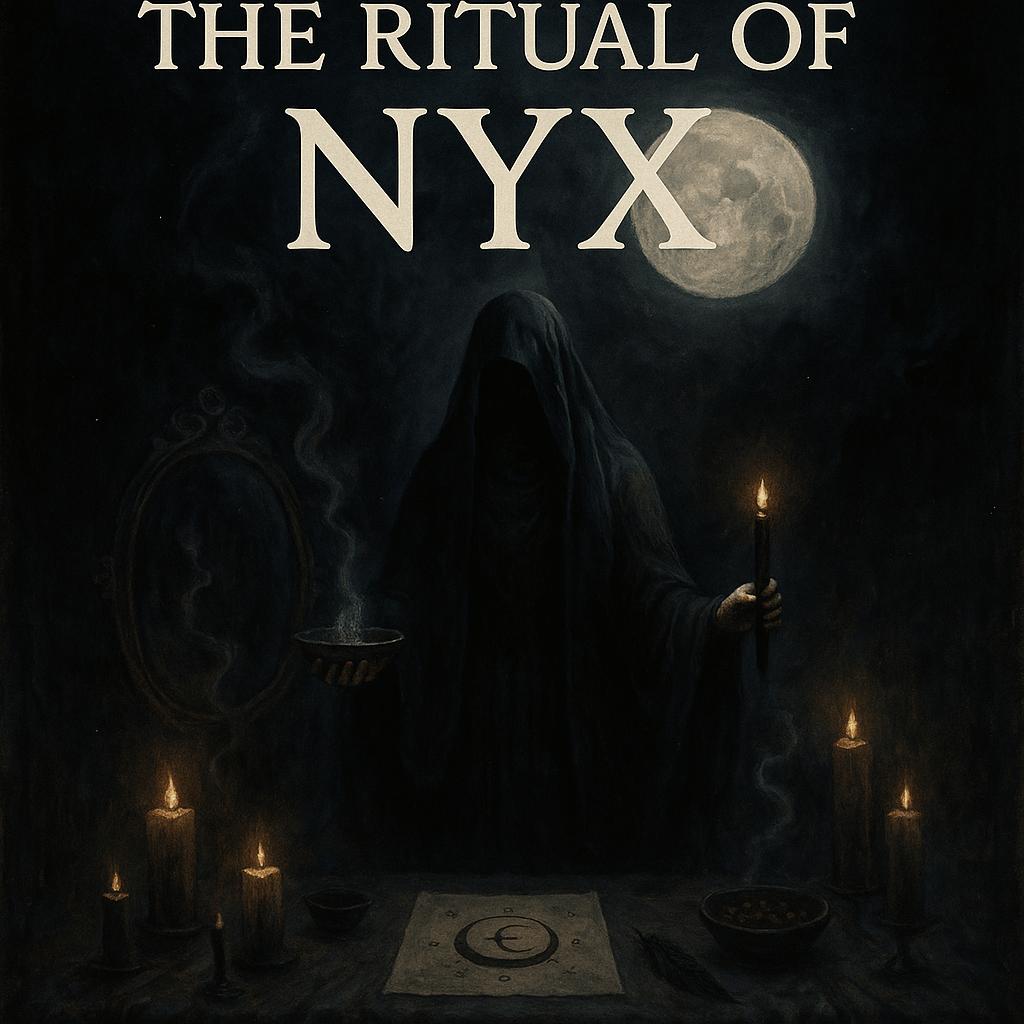Your cart is currently empty!

Magical Herbs: Ancient Powers, Mystical Uses, and Hidden Dangers
Magical herbs are plants that have been revered for centuries in traditional medicine and mystical practices for their healing properties and unique powers. However, these powerful herbs often come with significant dangers. From Mandrake and Belladonna to Datura and Foxglove, each herb has a storied past steeped in myth, folklore, and cautionary tales. This article explores the historical uses, mystical properties, and risks associated with these potent herbs, providing a comprehensive guide for anyone interested in the magic and mystique of ancient plants.
Table of Contents
- Mandrake – The Root of Power and Peril
- Belladonna – The Deadly Beauty
- Datura – The Devil’s Trumpet
- Foxglove – The Fairy’s Glove
- Conclusion: The Double-Edged Power of Magical Herbs
- Bibliography
1. Mandrake – The Root of Power and Peril
Keywords: Mandrake root, magical herbs, historical uses of Mandrake, Mandrake in ancient medicine, dangers of Mandrake
The Mandrake (Mandragora officinarum) has fascinated people for centuries with its strange, humanoid-shaped root. Known for its mystical properties, the Mandrake was used by ancient healers and sorcerers alike. Yet this herb is not without danger. Used incorrectly, Mandrake can be deadly, and stories of its powerful scream upon uprooting have become legendary.
Mandrake’s Historical Uses and Mystical Powers
In ancient Greece and Egypt, the Mandrake was revered as both a potent medicine and a mystical plant. Its use as a sedative dates back centuries, and it was often employed in surgical procedures (Riddle, 1992). Greek mythology associates Mandrake with the sorceress Circe, who was known for her powerful potions (Ogden, 2009).
- Medicinal Uses: Used in ancient surgery as a sedative.
- Love Potions and Charms: A common ingredient in love spells and magical charms to attract passion.
- Protection: Carried as a charm to ward off evil spirits.
Mandrake’s Dangers and Precautions
Mandrake root contains toxic tropane alkaloids, which can cause hallucinations, vomiting, and even death in large quantities (Heinrich, 2009). To avoid the mythical deadly scream, harvesters were said to tie Mandrake to an animal, sparing themselves from its lethal cry. Today, handling Mandrake is still dangerous and should be done with care.
Sources:
- Riddle, J. M. (1992). Contraception and Abortion from the Ancient World to the Renaissance. Harvard University Press.
- Ogden, D. (2009). Magic, Witchcraft, and Ghosts in the Greek and Roman Worlds: A Sourcebook. Oxford University Press.
- Heinrich, M. (2009). Ethnopharmacology. Wiley & Sons.
2. Belladonna – The Deadly Beauty
Keywords: Belladonna, Deadly Nightshade, uses of Belladonna, Belladonna in magic, Belladonna toxicity
Belladonna, or Deadly Nightshade (Atropa belladonna), has been both feared and admired for centuries. Named for its dark allure, “Belladonna” translates to “beautiful woman” in Italian, as women once used the plant to dilate their pupils for a striking appearance. While beautiful, Belladonna’s compounds are highly toxic, causing severe reactions if misused.
Belladonna in History and Folklore
In ancient Rome, Belladonna was infamous as a tool of political intrigue, often used to poison enemies. Renaissance women used it cosmetically, risking their vision to achieve its seductive effect (Phillips & Foy, 1990).
- Medicinal Use: Belladonna was used to relieve muscle spasms and soothe pain.
- Mystical Use: Witches reportedly used Belladonna to induce visions and in “flying ointments.”
- Cosmetic Use: Applied sparingly to dilate pupils, creating an alluring, wide-eyed appearance.
Belladonna’s Dangers and Safety Notes
Belladonna contains atropine and scopolamine, which can be fatal even in small doses. Symptoms of poisoning include confusion, blurred vision, and, in severe cases, death. Its toxicity makes it highly dangerous for amateur herbalists.
Sources:
- Phillips, R., & Foy, N. (1990). Herbs. Random House.
3. Datura – The Devil’s Trumpet
Keywords: Datura, Devil’s Trumpet, hallucinogenic plants, dangers of Datura, mystical uses of Datura
Datura, also called Devil’s Trumpet or Thorn Apple, is a hallucinogenic herb with large trumpet-shaped flowers. Often used in spiritual practices and shamanic rituals, Datura is as mysterious as it is dangerous. The plant’s psychoactive properties are known for inducing visions and states of altered consciousness.
Datura’s Spiritual and Ritual Use
The Aztecs used Datura, known as tolohuaxihuitl, in rituals to connect with the divine. Native American shamans believed it could guide them in vision quests and reveal spiritual truths. In India, Datura is associated with the god Shiva and used in certain religious practices (Schultes & Hofmann, 1980).
- Medicinal Use: Used to treat asthma, insomnia, and muscle pain in extremely controlled doses.
- Visionary Use: Datura was used to induce altered states and for spiritual journeys.
- Protection: Some cultures used it in rituals to ward off malevolent forces.
Risks of Using Datura
Datura contains toxic alkaloids that can cause violent hallucinations, memory loss, and respiratory failure. The effects are unpredictable, and mishandling it can have fatal consequences. Handling and ingestion should be approached only by those with advanced knowledge.
Sources:
- Schultes, R. E., & Hofmann, A. (1980). The Botany and Chemistry of Hallucinogens. Charles C. Thomas.
4. Foxglove – The Fairy’s Glove
Keywords: Foxglove, digitalis, heart medicine, Foxglove toxicity, magical properties of Foxglove
Foxglove (Digitalis purpurea), known as “Fairy’s Glove,” is a strikingly beautiful yet dangerous plant. Its delicate bell-shaped flowers were believed to be the hiding places of fairies, and folklore holds that it could summon or ward off these mystical beings. While admired, Foxglove is also one of the most poisonous plants in the world.
Foxglove’s Role in Medicine and Folklore
Foxglove was first documented as a heart medicine in the 18th century. Its compound, digitalis, remains in use today for heart conditions. However, its toxicity is well-known, and historical texts advise great caution when using it (Withering, 1785).
- Medicinal Use: Used to treat heart conditions and improve circulation.
- Magical Use: Believed to have protective qualities and the power to attract or repel fairies.
- Mythological Use: Connected to fairy folklore, it was often left unpicked out of respect.
Foxglove Poisoning and Precautions
Foxglove poisoning causes nausea, vomiting, and heart irregularities, which can be fatal. Only trained herbalists should handle Foxglove, as it is lethal in high doses and requires exacting care in medicinal applications.
Sources:
- Withering, W. (1785). An Account of the Foxglove, and Some of Its Medical Uses. Charles Elliot.
Conclusion: The Double-Edged Power of Magical Herbs
Magical herbs like Mandrake, Belladonna, Datura, and Foxglove have captivated humanity for centuries. These plants embody the delicate balance between healing and harm, offering benefits when used wisely but carrying grave dangers when misused. From ancient Greece to Renaissance Europe, cultures across time have revered these plants, treating them with respect and caution.
As fascinating as these herbs are, their potency is undeniable. They remind us that the gifts of nature come with warnings: each magical herb has a shadow side, a power to heal and a power to harm. Use them with wisdom and reverence, for each plant in nature’s apothecary demands a practiced hand.
Bibliography
- Capasso, L. (2001). Medicinal Plants and Traditional Medicine in Africa. Oxford University Press.
- Heinrich, M. (2009). Ethnopharmacology. Wiley & Sons.
- Nutton, V. (2004). Ancient Medicine. Routledge.
- Ogden, D. (2009). Magic, Witchcraft, and Ghosts in the Greek and Roman Worlds: A Sourcebook. Oxford University Press.
- Phillips, R., & Foy, N. (1990). Herbs. Random House.
- Riddle, J. M. (1992). Contraception and Abortion from the Ancient World to the Renaissance. Harvard University Press.
- Schultes, R. E., & Hofmann, A. (1980). The Botany and Chemistry of Hallucinogens. Charles C. Thomas.
- Withering, W. (1785). An Account of the Foxglove, and Some of Its Medical Uses. Charles Elliot.






